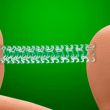Drug-eluting balloons have demonstrated safety and effectiveness in the treatment of small-vessel coronary artery disease and in-stent restenosis. However, randomized studies were performed using paclitaxel. Several studies have shown that using biolimus, a semisynthetic analog of sirolimus, optimizes drug delivery in both stents and balloons. The aim of this randomized, multicenter study was to evaluate...
Should We Start Thinking Again About Bioresorbable Stents?
Coronary revascularization with drug-eluting stents (DES) is very frequent, especially in acute coronary syndromes, but these metallic stents are permanent foreign bodies that activate the entire inflammatory system. Using bioresorbable stents (BRS) emerged as an alternative to this challenge. Although the initial results of the ABSORB study were not as expected (probably due to a...
EuroPCR 2022 | Should Revascularization Be Performed Before TAVR in Patients with Stable Coronary Disease?
Currently, the American and European guidelines recommend coronary angioplasty in patients with severe aortic stenosis with lesions >70% (Class IIa) who will undergo transcatheter aortic valve replacement (TAVR). However, the benefit of performing a revascularization in these patients is still uncertain. This prospective multicenter study included 2025 patients divided into two groups: complete revascularization (N = 1310)...
Prophylactic Rivaroxaban Therapy for Left Ventricular Thrombus after ST-Segment Elevation Acute Coronary Syndrome
The incidence of left ventricular thrombosis (LVT) after anterior ST-segment elevation myocardial infarction (STEMI) ranges from 4% to 26%. This is associated with bad long-term evolution. In the past, triple-scheme therapy (vitamin K antagonist plus dual antiplatelet therapy) was recommended to prevent LVT, despite the lack of high-quality scientific evidence and an increase in the...
OCT in STEMI Patients: Is It Safe to Prevent Stenting?
Percutaneous coronary intervention in patients with acute myocardial infarction (AMI) where the physiopathological mechanism is plaque erosion or non-atherosclerotic mechanisms (such as spontaneous coronary artery dissection) is not beneficial according to recent studies. The EROSION study (Effective Anti-Thrombotic Therapy Without Stenting: Intravascular Optical Coherence Tomography–Based Management in Plaque Erosion) has shown medical treatment with no...
Is iFR Reliable After 5 Years? Analyzing the iFR-SWEDEHEART at 5 Years
Fractional flow reserve (FFR) proved to be very useful and safe in the FAME study, but its trade-off was using adenosine (which has a short half-life) and adverse reactions, which fortunately were rare. Subsequently, two large studies—the iFR-SWEDEHEART and DEFINE-FLAIR—demonstrated that instantaneous wave-free ratio (iFR) offered comparable results to FFR in the short term, avoiding...
ACC 2022 | FLAVOUR Study: FFR and IVUS in Intermediate Coronary Lesions
FLAVOUR was a prospective randomized non-inferiority study in patients with intermediate coronary lesions (40%-70%) that compared two imaging modalities: IVUS (intravascular imaging) and FFR (fractional flow reserve). According to this research—presented at ACC 2022—, FFR-guided angioplasty was non-inferior to IVUS-guided angioplasty at 2 years of follow-up. Furthermore, using FFR-based imaging led to fewer stent implantations....
ACC 2022 | COMPLETE
Percutaneous coronary intervention improves angina related quality of life in AMI patients with multivessel disease. The COMPLETE study has shown patients receiving complete revascularization compared against culprit-only revascularization presented lower cardiovascular rate or AMI at 3-year followup. ACC featured a COMPLETE subanalysis assessing angina related quality of life. It included 4041 patients, mean age 62,...
ACC 2022 | PACMAN AMI
Atherosclerosis plaque causing AMI is often large in volume, high in lipids and have a thin fibrous cap. Statins often reduce atherosclerosis progress, but the impact of PCSK 9 inhibitors (alirocumab) after acute coronary syndrome is scarcely known. The aim of this study was to determine the effect of alirocumab using intracoronary imaging (IVUS, OCT,...
Are There Differences Between Women and Men After a Percutaneous Intervention?
Prior research has shown that women with coronary artery disease who undergo percutaneous revascularization present more comorbidities, require less aggressive treatments, have greater long-term morbidity rates and worst functional status and/or post-procedure angina. This study used data from the CPORT-E trial (Cardiovascular Patient Outcomes Research Team Non primary Percutaneous Coronary Intervention) to assess baseline differences...







